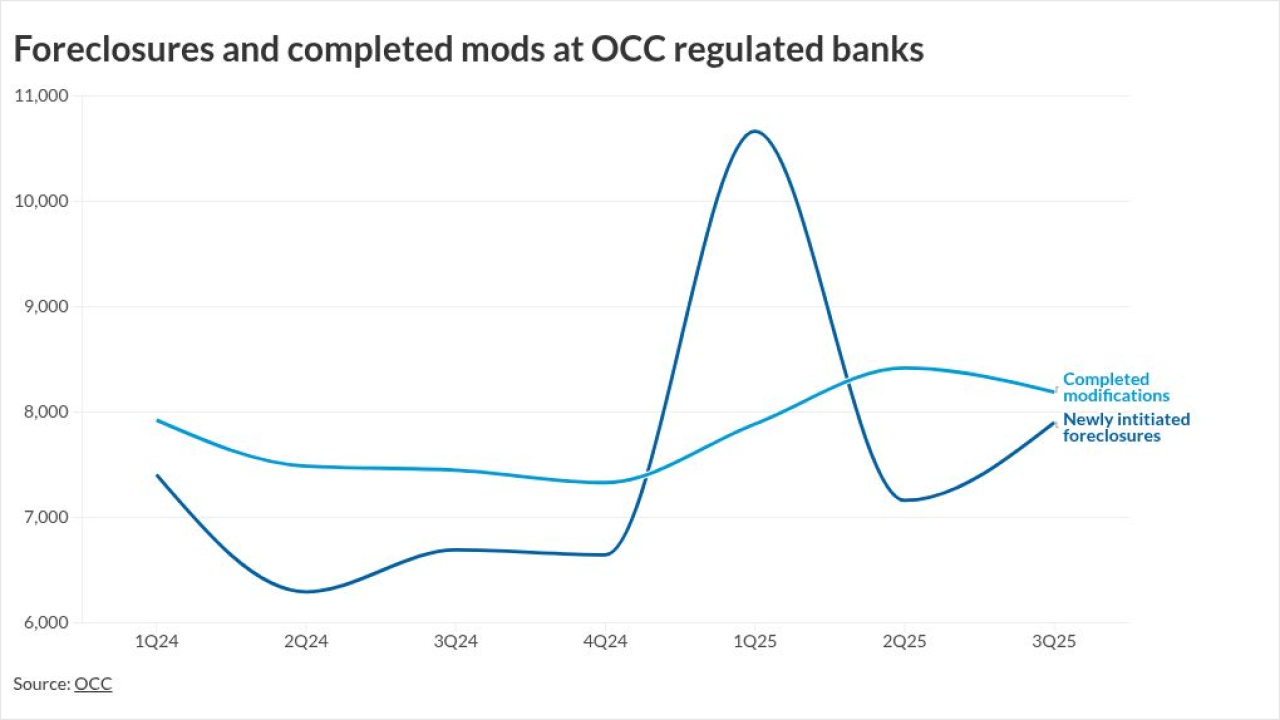Although mortgage default risk remains very low, it was the only category of consumer lending to experience increases both sequentially and year-to-year in VantageScore Solutions' latest update to its index.
The weighted-average probability of default for mortgages in the fourth quarter of 2017 was just over 1%, but it was 13% higher than a year ago and almost 4% higher than the previous quarter, according to VantageScore, a provider of credit scoring models the mortgage industry is
Of the four consumer lending categories tracked by VantageScore, only student loans experienced a greater consecutive-quarter increase of more than 21%. Student loans had the highest probability of default at more than 18% in 4Q17, even with their default risk down nearly 3% from a year ago.

Auto loans had the next highest probability of default approaching 4%, but the default risk was down more than 2% from the previous quarter and almost 5% from a year ago.
Bank cards had a probability of default approaching 3% and experienced almost a 2% drop in default risk compared to the previous quarter. Bank cards registered a 1% decline in default risk compared to a year ago.
Originations in all four categories were down compared to the previous quarter with mortgages, auto loans and bank cards all down by between 5% and 6% as student loan volumes fell by more than 50%.
Mortgages and student loans were the only two categories to also register year-to-year declines in originations for the quarter, of more than 17% and 3%, respectively. Bank cards managed to maintain the same volume year-to-year and auto loans managed to eke out a slight increase just over 1%.



